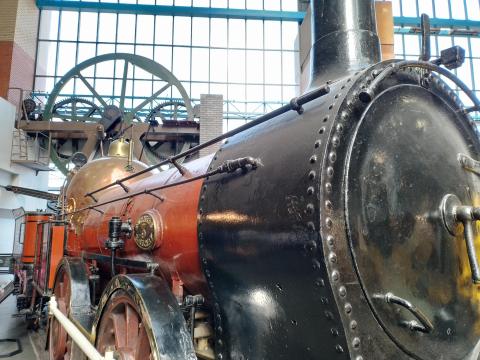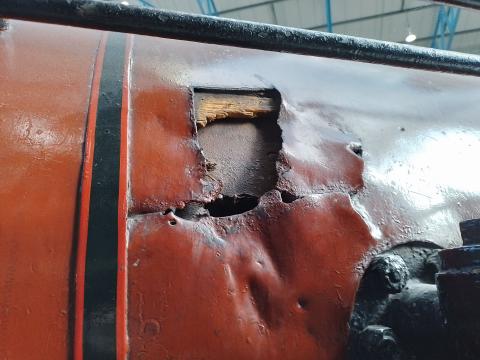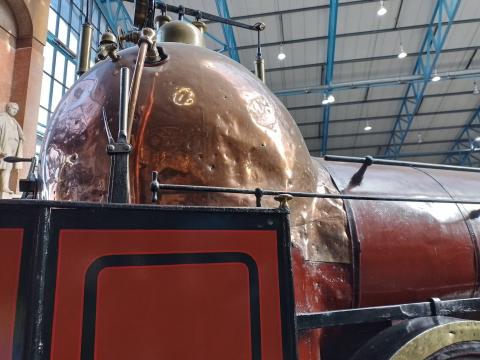Coppernob

Coppernob (1846) is the last surviving example of a 'bar-framed' locomotive in the UK. Bar-framed locomotives were designed to be big and powerful but without being heavy. Designer Edward Bury used a slim frame of iron bars as the structure, instead of heavy timber and iron frames other engineers were using. The design became standard for American-built locomotives.
Coppernob survived a Second World War bombing raid in May 1941: one may still see the holes in the picture below. After a working life hauling goods and passengers, the locomotive was retired and put on display in a glasshouse on Barrow-in-Furness station. When the station was bombed, shrapnel destroyed the glass house and punctured the boiler and platework.

The damage, though relatively light, has technically injured the locomotive and retarded its appearance. The scar does not appear comely. Yet, somehow, it adds to the engine’s overall lustre. Here is the loco that survived a Nazi bomb. Here is the loco which quite possibly epitomises Britain: hurt by the War but outliving the evil regime which nearly ruined her, and against which she bravely fought.
Scars and bruises make for uglier bodies, but more impressive spirits. The buffetings we receive may hurt our minds and bodies on earth, but I am persuaded that they shall only add to our sparkle in heaven.

Therefore I take pleasure in infirmities, in reproaches, in needs, in persecutions, in distresses, for Christ’s sake. For when I am weak, then I am strong. 2 Cor. 12:10, NKJV
- Log in to post comments


 Sunday Worship 10.45am & 6.00pm
Sunday Worship 10.45am & 6.00pm